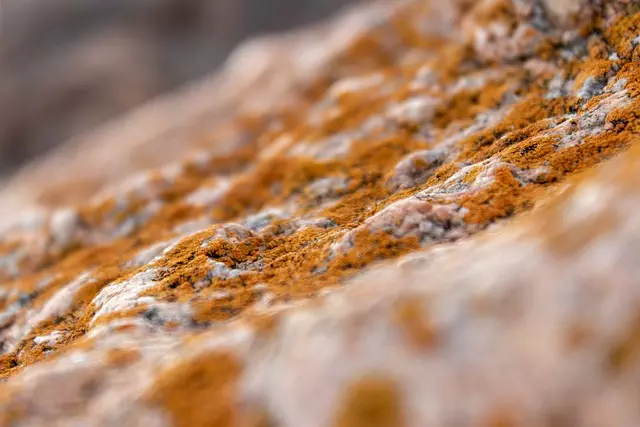TL;DR:
Grout sealing is crucial for maintaining tiled surfaces by addressing their inherent porosity, which makes them susceptible to moisture, mold, and stains. Regular sealing (every 1-2 years) with high-quality products creates a non-porous barrier, preventing liquid absorption and mold growth. This preserves aesthetics and structural integrity, especially in humid areas like kitchens and bathrooms.
Key points:
– Grout sealing protects against water, stains, and mold growth.
– Regular sealing extends grout lifespan and makes cleaning easier.
– Choosing the right sealer for your grout type is essential.
– Proper application and care ensure long-lasting results.
– Delayed or inappropriate sealing can lead to costly repairs.
– Modern sealers offer advanced protection against stains and mold.
Grout sealing is an essential practice in maintaining the longevity and aesthetics of your tiled surfaces. This article explores the critical role of grout sealing in preventing damage, particularly mold and stain growth. By understanding the vulnerabilities of grout and its composition, we can appreciate why regular sealing offers robust protection. Learn about common issues, the benefits of routine sealing, choosing the right products, application techniques, post-sealing care, and advanced strategies to safeguard your tiles from potential hazards, ensuring a durable and vibrant finish.
Understanding Grout and Its Vulnerability to Damage

Grout, often overlooked, is an essential component in any tiled surface. It’s the material that fills the spaces between tiles, providing both structural support and aesthetic definition. However, grout can be particularly vulnerable to damage over time due to its porous nature. Moisture, mold, and stains are common issues that can emerge, especially in areas with high humidity or frequent water exposure. This is where grout sealing becomes a critical step in maintenance—it creates a protective barrier against these elements, ensuring the longevity of your tiled surfaces.
By applying grout sealing products specifically designed to prevent mold and stains, you create a non-porous layer that shields the grout from absorbing liquids and allowing mold growth. These seals not only enhance the visual appeal of your tiles but also play a crucial role in preventing permanent damage and costly repairs. Regular sealing every 1-2 years is recommended for optimal protection, especially in areas like kitchens, bathrooms, or outdoor spaces where grout is continually exposed to moisture.
The Role of Grout Sealing in Prevention

Grout sealing plays a pivotal role in preventing damage, specifically mold and stains, within your space. It’s an essential step in maintaining the aesthetics and longevity of your grout lines, which are often overlooked but highly susceptible to water intrusion and dirt accumulation. By applying a high-quality grout sealer, you create a protective barrier that repels moisture, preventing the growth of harmful mold and bacteria, as well as minimizing the absorption of stains from everyday wear and tear.
This simple yet effective process involves sealing the pores in the grout, stopping contaminants from penetrating and causing discoloration or unsightly marks. A well-sealed grout not only enhances the visual appeal of tiled surfaces but also protects against the deterioration that can occur over time due to water damage. Thus, regular grout sealing is a proactive measure to preserve your space, ensuring it remains clean, fresh, and free from damaging elements.
Common Causes of Grout Discoloration and Mold Growth

Grout, often overlooked, is a crucial component in maintaining the beauty and integrity of your tiles. Discoloration and mold growth are common issues that can arise due to several factors. One of the primary causes of grout discoloration is water penetration. When moisture seeps into the grout lines, it can react with various substances, such as minerals present in hard water, resulting in stains. Over time, this can lead to a significant loss in the aesthetic appeal of your tiled surfaces.
Moreover, inadequate ventilation and poor cleaning practices contribute to another prevalent problem—mold growth. Dark, damp corners are ideal breeding grounds for mold, which not only affects the grout’s appearance but also poses health risks. Preventing these issues involves regular sealing of grout to create a protective barrier against moisture and stains. Grout sealing is an effective method to ensure longevity and maintain the pristine condition of your tiled areas.
Benefits of Regular Grout Sealing

Regular grout sealing is a crucial step in maintaining the longevity and aesthetics of your tiled surfaces. It acts as a protective barrier, preventing water and stains from seeping into the grout lines. This is particularly important in areas prone to moisture, such as bathrooms and kitchens, where mold and mildew can thrive if left unchecked. By regularly applying high-quality grout sealers, you create an impenetrable shield that keeps out dirt, grease, and other contaminants, ensuring your tiles stay clean and fresh-looking for longer.
Moreover, sealed grout offers enhanced durability against wear and tear. It prevents the absorption of liquids, which can cause stains or even damage to the tile itself. This is especially beneficial in high-traffic areas where grout is constantly exposed to foot traffic and potential spills. Regular sealing also makes cleaning easier, as sealed grout repels dirt and grime, allowing for faster, more effective maintenance with minimal effort.
Choosing the Right Sealer for Your Grout Type

When considering grout sealing as a preventive measure against mold, stains, and other damage, it’s crucial to select the right sealer for your specific grout type. Different sealers are formulated to address various materials—be it porcelain, ceramic, or stone—and each has unique properties tailored to different levels of porosity. For instance, grout with higher absorption rates may require a silane or siloxane-based sealer known for its ability to penetrate and seal deeper into porous surfaces. Conversely, less absorbent grouts might be suited by water-repellent coatings that create a barrier without infiltrating the material.
Understanding your grout’s characteristics is essential in ensuring the longevity of your sealing effort. Properly chosen sealers not only prevent mold growth but also repel stains, making cleaning easier and maintaining your space more efficient. Always check product labels for compatibility with your grout type, considering factors like surface hardness and moisture levels to make an informed decision that aligns with “grout sealing to prevent mold and stains.”
Step-by-Step Guide: Applying Grout Sealer Effectively

Applying grout sealer effectively is a straightforward process that can significantly enhance your tile’s longevity and protect it from mold, stains, and other damage. Here’s a step-by-step guide to ensure optimal results:
1. Prepare the Surface: Begin by thoroughly cleaning the tiled area. Use a mild detergent and warm water to remove any dirt or debris. Rinse well and ensure the surface is completely dry before proceeding. This initial step ensures that your grout sealer adheres properly, maximizing its protective benefits.
2. Choose the Right Sealer: Select a grout sealer designed specifically for preventing mold and stains. Water-based sealers are popular choices due to their ease of application and low odor. Follow the manufacturer’s instructions regarding application time and curing requirements. The right sealer will create an impenetrable barrier, safeguarding your tiles from future damage.
3. Apply the Sealer: Evenly coat the grout lines with the chosen sealer using a grout brush or sprayer. Ensure complete coverage without missing any spots. Allow the sealer to penetrate the grout for the recommended time, usually a few minutes. This step is crucial in sealing off any pores or crevices where mold and stains can thrive.
4. Rinse and Dry: After allowing the sealer to set, rinse the tiles thoroughly with clean water to remove any excess. Ensure all residue is eliminated to prevent potential staining. Let the area air dry completely before walking on or using it again. This final step ensures your grout remains protected without leaving behind any residue.
Post-Sealing Maintenance Tips to Keep Grout Healthy

After successfully sealing your grout, maintaining proper care is essential to preserve its longevity and prevent the growth of mold and stains. Regular cleaning is key; use a soft-bristled brush and mild detergent to gently scrub any dirt or debris from the tiled surface. Avoid aggressive cleaning methods that could damage the sealant.
Additionally, staying on top of moisture control is vital. Ensure proper ventilation in areas with high humidity, such as bathrooms, to minimize water seeping into the grout lines. Regularly check for any signs of water intrusion and address them promptly. By combining these maintenance practices, you’ll effectively protect your sealed grout from potential damage, ensuring a healthy and stain-free environment.
Common Mistakes to Avoid During the Sealing Process

When it comes to grout sealing, many homeowners make mistakes that compromise its effectiveness in preventing mold and stains. One of the most common errors is delaying the sealing process until visible damage or growth has already occurred. Mold thrives in dark, damp spaces, so regular sealing is crucial to stop it from taking root. Ignoring this maintenance step can lead to extensive and costly repairs down the line.
Another blunder is using the wrong sealant for your grout. Different sealants offer varying levels of protection against water, stains, and mold. It’s essential to choose a sealant specifically designed for grout, ensuring it provides adequate coverage and longevity. Using an unsuitable product might seem like a quick fix but will likely result in reapplication needs more frequently, leading to potential health hazards and continued damage.
Advanced Techniques for Long-Lasting Protection

To ensure long-lasting protection against mold, stains, and other grout damages, advanced techniques have emerged as game-changers in the sealing process. Beyond traditional methods, modern innovations offer a robust defense for your grout, preserving its aesthetic appeal and structural integrity over time. One such technique involves the use of specialized sealers designed to penetrate deeply into the grout’s porous structure, creating an impenetrable barrier against moisture, dirt, and stains. These advanced sealers are often silicon-based, known for their flexibility and durability, allowing them to withstand movement and maintain a tight seal.
Additionally, technological advancements have led to the development of self-cleaning grout options, integrating antimicrobial properties that inhibit the growth of mold and bacteria. This innovative approach combines sealing with active protection, providing an extra layer of defense against health hazards often associated with unsealed grout. By combining cutting-edge materials and technologies, these advanced techniques offer a comprehensive solution for maintaining grout in optimal condition, ensuring it remains free from unsightly stains and harmful organisms for years to come.
